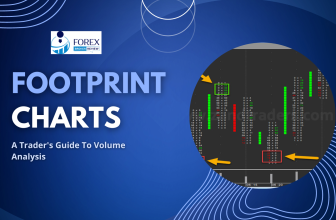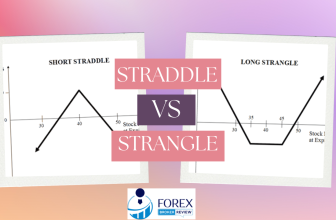
Forex signals, an ever-evolving aspect of the financial market, have garnered significant attention among traders. But, do forex signals work? This pertinent question prompts a deeper exploration into the efficacy and limitations of these trading tools. Forex signals serve as alerts that guide traders on when to buy or sell currencies at specific price points. They can be based on various types of analysis, including technical, fundamental, or price action analysis.
However, caution must be exercised while selecting signal providers, as their expertise and reliability can vary greatly. Unrealistic profit claims and unverified performance records should be approached with skepticism. It is prudent to test signal services on demo accounts before committing real money. While forex signals can be advantageous for beginners, they should not replace the need for independent trading knowledge and skills. Successful trading entails a comprehensive understanding of factors such as money management, discipline, emotions, and exit strategies. Thus, it is imperative to delve beyond the surface and critically evaluate the effectiveness of forex signals.
Key Takeaways
- Blindly following forex signals without conducting market analysis can lead to poor performance.
- Caution should be exercised when choosing a signal provider, as some may lack experience and skills, resulting in low-quality signals.
- Testing a signal service on a demo account before trading with real money is recommended.
- Learning to trade forex independently is valuable compared to relying solely on forex signals.
Do Forex Signals Work?
Forex signals are alerts that provide specific instructions to buy or sell currency pairs at predetermined prices, often including stop loss and take profit levels, based on various types of analysis such as technical, fundamental, or price action analysis. These signals are typically generated by experienced traders or automated systems and aim to assist traders in making informed trading decisions.
Forex signals differ from copy trading in that they only provide recommendations or suggestions, whereas copy trading involves automatically replicating the trades of selected traders. This means that traders following signals have the flexibility to analyze and decide whether to take a trade, while copy trading involves a more passive approach.
For beginners, forex signals can be a valuable learning tool, as they provide insights into trading strategies and market analysis. However, it is important for beginners to not solely rely on these signals, but rather use them as a learning experience while also developing their own trading skills and knowledge.
Types of Analysis
Technical, fundamental, and price action analysis are common methods used to analyze the market and make informed trading decisions. Each type of analysis has its pros and cons and can have an impact on trading success.
Pros of technical analysis:
- Helps identify trends, support, and resistance levels.
- Provides entry and exit signals based on chart patterns and indicators.
- Can be used in combination with other analysis methods.
- Provides a systematic approach to trading.
Cons of technical analysis:
- Relies on historical price data and may not always accurately predict future price movements.
- Can generate false signals, leading to losses.
- Requires knowledge and understanding of various technical indicators and chart patterns.
- May result in overtrading if not used with proper risk management.
Pros of fundamental analysis:
- Considers economic factors, such as interest rates, GDP, and geopolitical events.
- Helps determine the intrinsic value of a currency.
- Provides a long-term perspective on the market.
- Can be used to identify potential trading opportunities.
Cons of fundamental analysis:
- Requires extensive research and understanding of economic indicators.
- Market reactions to fundamental events may be unpredictable.
- Fundamental analysis alone may not provide precise entry and exit points.
- Can be time-consuming.
Pros of price action analysis:
- Focuses on the actual price movement and market dynamics.
- Helps identify key levels of support and resistance.
- Provides insights into market sentiment.
- Can be used in conjunction with other analysis methods.
Cons of price action analysis:
- Requires experience and skill in interpreting price patterns.
- Subjective interpretation may lead to different conclusions.
- May not work well in highly volatile or choppy markets.
- Relies heavily on the trader’s ability to read and interpret price movements accurately.
The type of analysis used in forex trading can have a significant impact on trading success. It is essential for traders to understand the pros and cons of each analysis method and consider using a combination of techniques to make informed trading decisions. Additionally, risk management and proper execution of trades are crucial factors in achieving consistent profitability.
Considerations for Choosing Providers
When considering providers for signal services, it is important to evaluate their track record, reputation, and transparency in order to make an informed decision. Vetting the signal provider is crucial to ensure quality signals. One should assess the provider’s trading strategy, methodology, and risk management approach. A reliable provider will have a verified track record, demonstrating their historical performance and consistency.
Transparency is also key, with the provider clearly stating their past performance, including both winning and losing trades. Additionally, it is advisable to consider the provider’s reputation among the trading community, checking for reviews and feedback from other traders. By conducting a thorough vetting process and placing importance on a track record, traders can increase their chances of selecting a reliable signal provider.
Do Forex Signals Work: Limitations and Risks
Limitations and risks associated with relying solely on signal services include the potential for poor performance due to blindly following signals without conducting independent market analysis. Common mistakes when following forex signals include not understanding the underlying analysis behind the signals, not considering the risk-reward ratio of each trade, and not adjusting the signals to their own trading style and risk tolerance.
To manage risks when using forex signals, traders should set strict risk management rules, such as determining their maximum risk per trade and using appropriate stop-loss orders. Additionally, traders should carefully select signal providers with a proven track record and consider diversifying their sources of signals to reduce reliance on a single provider. It is also important to continuously evaluate the performance of the signal service and make adjustments as needed.
Frequently Asked Questions
How can I determine the reliability and accuracy of a forex signal provider?
Evaluating forex signal providers involves considering key factors for choosing reliability and accuracy. These factors include assessing the provider’s track record, transparency, risk management practices, customer reviews, and the use of verified performance data.
Are there any recommended strategies for managing risk when using forex signals?
Recommended risk management strategies when using forex signals include setting appropriate stop loss and take profit levels, diversifying trades across different currency pairs, and using proper position sizing. Evaluating signal provider credibility involves conducting thorough due diligence, considering their trading strategy and verified track record.
Can forex signals be used for long-term investing or are they more suitable for short-term trading?
Forex signals are more suitable for short-term trading rather than long-term investing. Short-term trading allows for quick profits and frequent trades, while long-term investment strategies require a broader analysis of market trends and fundamental factors.
Are there any specific indicators or patterns that forex signal providers commonly use in their analysis?
To analyze the market, forex signal providers commonly use indicators and patterns such as moving averages, Fibonacci retracements, support and resistance levels, and candlestick patterns. These tools help identify potential entry and exit points for trading signals.
How do forex signals differ from automated trading systems or robots?
Forex signals differ from automated trading systems or robots in that signals are alerts generated by human analysts, while automated systems execute trades based on pre-programmed algorithms. Forex signals offer the advantage of human analysis and decision-making, allowing for flexibility and adaptation to market conditions.
However, they also have the potential for human error and may not always be timely. Automated trading systems, on the other hand, offer the advantage of speed and consistency but lack the ability to adapt to changing market conditions. Ultimately, the choice between forex signals and automated trading systems depends on individual preferences and trading strategies.






